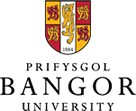NOTE ON MACHINE TRANSLATION AND TRANSLATION TOOLS FOR TRANSLATION MANAGERS AND COMMISSIONERS
Translation from one human language to another is a highly skilled task, and one that is vital for effective communication in a multilingual world. Professional translators nowadays usually work in a computerized environment, and there are many tools to aid them improve their workflow, accuracy and speed in providing translation services.
THE VARIOUS TYPES OF TRANSLATION TOOLS
These are sometimes grouped together and called CAT (computer assisted translation) Tools, or the ‘Translator’s Toolbox’. CAT tools have proven to increase consistency in translation and aid the productivity of translators while reducing the cost of translation. It is however important for managers to understand the different types of tools available, what each can do, and how they are designed to help, rather than replace, human translators. Translation tools include:
• Spelling and grammar checkers (e.g. Cysill Welsh spelling and grammar checker, the spellchecker in Microsoft Word)
• Electronic dictionaries, glossaries and technical terminologies, either off-line (e.g. the Cysgeir compendium in Cysgliad, the Geiriaduron phone app for iOS and Android) or on-line (e.g. the Welsh National Terminology Portal, Welsh Academy Dictionary on-line)
• Translation workflow systems, which aid the processing, tracking, distribution, archiving, and in some cases the billing, of translation projects
• Translation memory software, e.g. Trados, Déjà Vu and Wordfast, which store the originals and translations of documents already translated, retrieving full or partial matches at sentence or segment level to save having to translate the same segment twice
• Machine translation, where the computer translates automatically without any human input. Examples of this technology includes Google Translate and Bing Translator, and there are many others who offer free translation on the web. However, these translations may be inaccurate at best, and at their worst may be libellous, offensive or dangerous.
• Hybrid systems, e.g. CyfieithuCymru/TranslateWales, which combine a number of the above features, offering a ‘one-stop shop’ for the translation office.
SPEEDING UP AND IMPROVING TRANSLATION THROUGH TECHNOLOGY
All translation tools aim to save time and improve translation quality. For example, electronic dictionaries, accessible at a click from a translator’s computer, save time by not having to open and leaf through a paper dictionary, and spell checkers can pick up typos as well as minor errors in written texts, thereby aiding the proofreading process. Translation workflow systems save a great deal of administrative time, as well as improving an organisation’s capacity to gather statistics on its translation activity. However, the greatest efficiency gains in the translation process in recent years have been made through adoption of translation memory software, often integrated with other tools in a hybrid system that provides everything the translator needs in one place.
Tools may be available for the translator individually on their own computer, or, increasingly, on a network where they share translation memories etc. with colleagues. Networking provides many advantages, including the ability to share glossaries, translation memories, and other resources. Resources may be accessed internally within a company intranet, or externally, over the web or in a remote ‘cloud’ the latter being useful in the outsourcing of translation to translation agencies.
SECURITY CONSIDERATIONS
Despite the generally positive benefits of using translation technology, translation managers need to be aware of associated dangers and pitfalls they need to avoid.
Security issues include the storage of sensitive information, and the need to comply with the Data Protection Act and similar legislation. Translation memories store documents in original and translated form, therefore, care needs to be exercised in their use. Names of people, addresses and other identifying features may be added to documents following the translation process, allowing pro forma letters etc to be stored in the translation memory without compromising confidentiality. However, the most sensitive documents should not generally be stored in translation memory systems unless they have a high level of encryption. Hosting such systems on internal servers within an organisation gives an added level of protection, or if a cloud-based system is used, it is important to ensure that the servers are located in Europe, where they are subject to European Union confidentiality laws, rather than other geographic regions such as the USA, where the law permits government to obtain information from server providers. Note however that the United States has challenged the right to confidentiality on European servers where a company is based in the USA, and that is a complex and constantly evolving issue.
Machine translation services should not be used for the translation of sensitive material. Texts input to these services for translation are also stored on servers, usually outside the customer’s control. They may be accessed by others, and sensitive information could also potentially resurface in translated text.
MACHINE TRANSLATION AND QUALITY ISSUES
Translations generated by automatic means are not yet perfect between any language pair. They attain a higher degree of correctness if they are in a limited domain e.g. weather forecasting, where the subject matter is highly constrained. Automatic or machine translation is acceptable for gist translation, i.e. where the purpose of the translation is to give a rough idea of the content to someone who is unable to access the information in the original language. However, machine translation is not acceptable as a replacement for human translators where the translation is for official or public consumption. Laughable or embarrassing mistranslations made by machines have made headline news in the past, and may also lead to miscarriages of justice. This gives organisations trying to save costs by using them a bad reputation. Rectifying such problems may further add to the cost.
However, machine translation accompanied by human post-editing is acceptable, and can be incorporated within the translation memory workflow. In this scenario, the translator is never faced with an empty segment where no translation of the original text is suggested, as there will either be a match or partial match in the translation memory, and/or the automatic translation is displayed, which may then be treated as a partial match for further editing. The translator therefore becomes a post-editor, with savings in time and effort, depending on the quality of the automatic translation and the specific subject domain. Additional training may be required to enable the translator to learn additional skills as post-editor. A continuous programme of training to keep up to date with technical innovations is recommended in any case as part of the translator’s professional development, and will maximise the benefits to be gained from new technology.
Delyth Prys
Language Technologies Unit
Canolfan Bedwyr
Bangor University
November 2014


